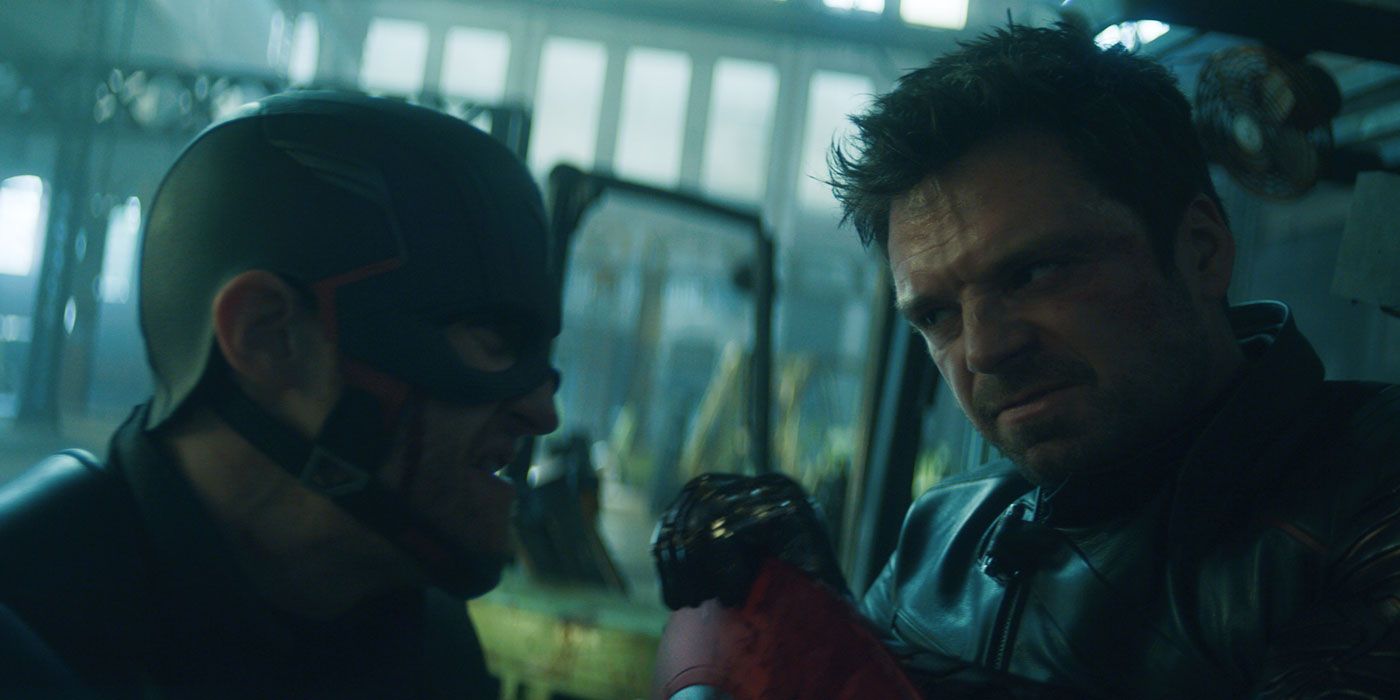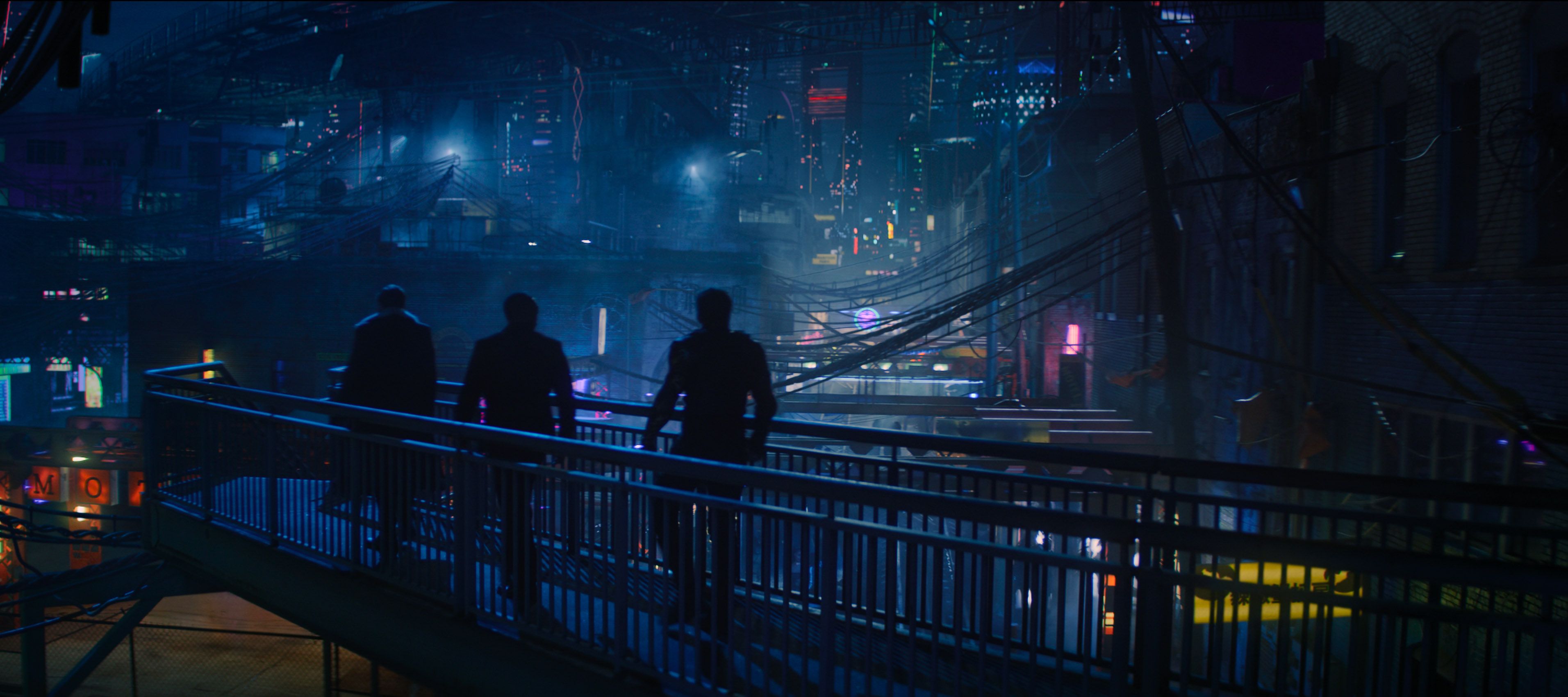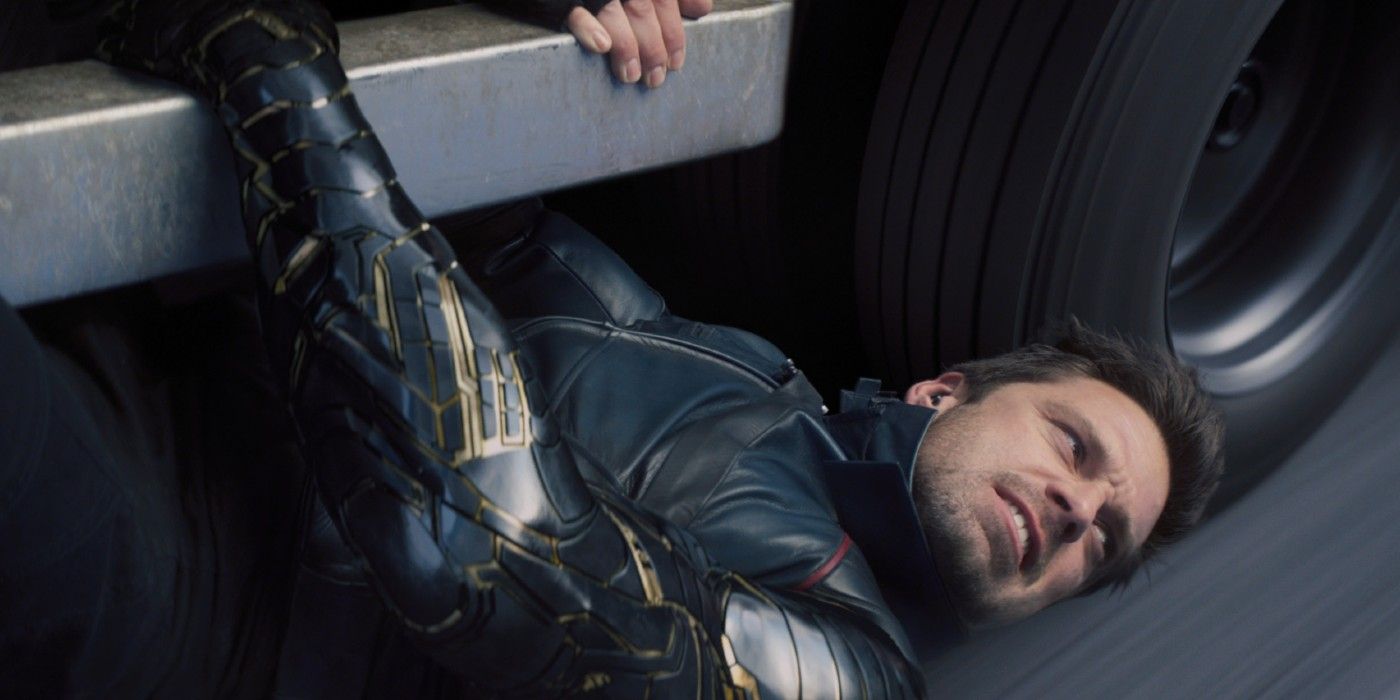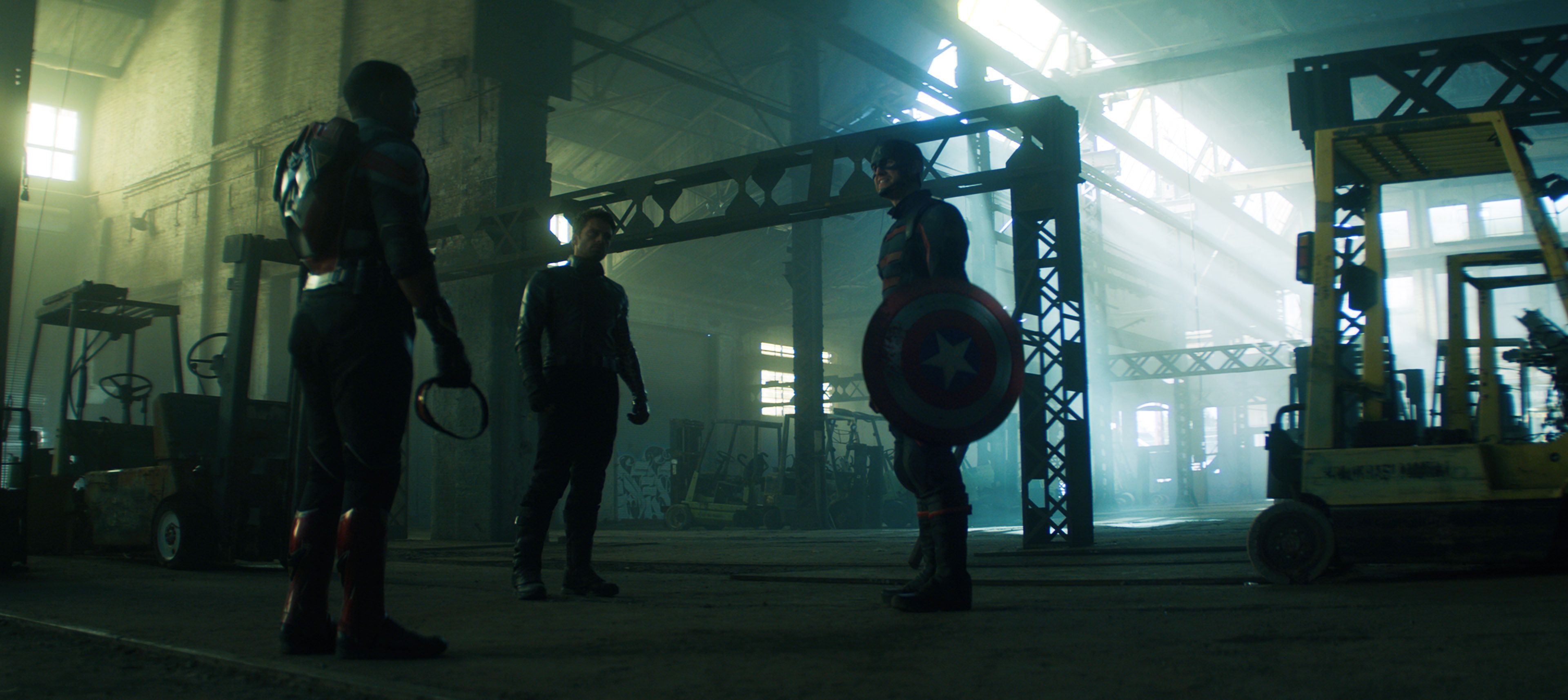In a year without new Marvel movies, The Falcon and the Winter Soldier has stepped up ably in delivering MCU-level action for fans, and director of photography P.J. Dillon is generous when it comes to acknowledging how much of a team effort those sequences end up being. That said, he is still very proud of his work on the show, which was unfortunately shut down at one point by the pandemic but still gave him the opportunity to help the adventures of Sam Wilson (Anthony Mackie) and Bucky Barnes (Sebastian Stan) to the small screen.
In a one-on-one interview with Collider, Dillon (a veteran of series including Vikings and Game of Thrones) explains how his role as cinematographer worked in honoring the characters' pre-established history and what went into bringing to life new MCU elements like the island city of Madripoor. He also reveals what his favorite sequence of the series was to shoot, and why.
Collider: So, you were done about a year ago?
DILLON: Yeah, due to COVID. So, we finished shooting in March, I guess, of 2020, and then production started up again in August or September. But, due to COVID, I wasn't able to come back. I was in Europe, and I was never able to come back to finish production.
How that experience was for you, knowing that it was happening, but you weren't able to be there?
DILLON: It was tough, but we had shot the bulk shot by then, and on any show like that, there's always an amount of work that you don't get to shoot, due to a second unit, or like that always happens. So, yeah, it was hard not to be able to finish that, but that's how it goes...
Well, coming into the project originally, you've got two characters who've been previously established by other projects, when you were looking at creating kind of the visual palette for the show, what were you considering in terms of how to bring in how the character has been filmed in the past and then create your own style around it?
DILLON: We were very conscious... [Director Kari Skogland] and I spoke a lot about how we could honor what has come before in terms of the movies, which are very cinematic — they were all shot on anamorphic lenses, shot widescreen. So, that was the starting point for us. We decided early on, even though it was a TV show, we'd shoot widescreen, we'd shoot on anamorphic lenses, and we tried to maintain that legacy, you know? So, we were very conscious of what had come before, and we tried to be very respectful of that. But at the same time, we knew that we were trying to do something different. So, I guess, we brought our own ideas to the story, but we were very conscious of what had come before, of course.
I mean, was there a point where you had a breakdown of which characters had which visual motifs assigned to them?
DILLON: It never got that specific at all. We would reference stuff from the movies a lot when we were talking about how we might shoot out the scenes, but there were no rules. What I have to say about my experience of working with Marvel, generally, is that they're incredibly generous creatively. So, their attitudes to Kari and I were "You've been hired to do this job, you have pretty much complete creative freedom to make whatever choices you want to make." It was a very pleasant experience in that regard.
In terms of working with Marvel, there were elements of the show that are, of course, well-established by the franchise already, but you also got to bring in some new stuff. Talk to me a little bit about filming Madripoor, because it's a comic book thing you're able to bring to the screen for the first time. That on its own must have been pretty exciting.
DILLON: It was really exciting. Yeah, it was. We were very conscious that it was the first time it was going to be seen. Ray Chan, the production designer, did an amazing job in terms of designing what it would be. And, there was a bunch of concept art produced at that time, so basically I just tried to execute what was in the concept art to make sure that it had the feeling, the tone, of that concept art. And, I think we were reasonably successful, I think.
One thing I couldn't help but feel was an inspiration point for Madripoor was Blade Runner — was that something that got brought up?
DILLON: No, it wasn't really, to be honest... Okay. I guess there are some similarities. Certainly it wasn't consciously referenced. Like, we did know we wanted to keep it dark. We did know we wanted to keep this colorful. And, I guess that template has been well set by Blade Runner, but it wasn't a very conscious reference at all. I think any futuristic sci-fi show absolutely references Blade Runner, even subconsciously, because it set the benchmark.
Of course. In terms of that, were there other specific references you had beyond the concept art?
DILLON: Not so much, to be honest. We would've worked with photographic references more than other TV shows or films. And, then, of course, we did. We had a lot of that stuff, and we would bounce stuff off each other, so she would show me some stuff and then I would come back with maybe some suggestions for her and Ray. And so, it worked like that, but in terms of other films and TV shows, not so much.
One last Madripoor question — because everything's a big interconnected universe at this point, did you have a sense of creating this look now and then paying it forward to future filmmakers, who might be telling stories in this setting?
DILLON: Not really. I think each of the shows have their own setting, and there's the freedom, I think, within the world. There's a freedom to adapt stuff and make it work. So obviously, you're not going to deviate completely from something that's done before. So, there is that to an extent, but I think like Ray would have worked very closely with Kevin [Feige] to be sure that the concept worked well, and the biggest part of my job really was trying to execute the concept that had been approved, you know?
Of course. Of course, another major aspect of the show are the stunts and the action sequences. You've done plenty of stunt work already in your career. Is there a difference between filming something like Game of Thrones or Vikings versus doing something in the MCU?
DILLON: There are differences because just there are different people involved in it. There are different approaches, but one is no better than the other.
The Marvel stunt team, stunt coordinators, and the fight designers, and actually the VFX team, are a big part of that in terms of designing the action sequences. They're just so accomplished, and they do such fantastic work that, from my point of view, it was very easy to fit in or to slip in and just execute what those guys were putting together. You try to bring your own particular creative stamp on it, but for the most part, those guys are just so accomplished and so good at what they do.
Of course, it looks like, based on behind-the-scenes footage, that some of that the truck fight in Episode 2 was filmed on an actual moving truck. Were you strapped in next to the camera for those sequences?
DILLON: No, I actually wasn't part of that at all because that was second unit. So, that was the second unit team that did the moving truck stuff. Which is actually the way in most action movies — the main unit would shoot the drama and then shoot with the actors, and then the stunt work generally goes to second unit. So we would do a lot of the closeups for the stunt work, anything involving the main cast, and the main unit would usually shoot against blue screen. But the actual stunt work itself would be executed by second unit.
Okay, so what about the big Sharon fight sequence in Episode 3, because that's like you said very stunt-heavy, but also you've got a lot of focus on her face and her performance?
DILLON: Yeah, so again, that would have been a mix. Emily [VanCamp] does a lot of her own stunts, so yeah, it was her a lot of the time. Usually, the stunt team will do the stuff with doubles and with stunt performers, and then when it comes to do the actual work with the actress, with Emily, the main unit would do that. That's generally the approach. And, I think that's sort of the standard approach in most action films.
Gotcha. Well, in that case then, in rewatching that sequence, how much of it were you actively engaged with, was the main unit actually engaged with?
DILLON: Right, like maybe 60 percent, maybe something like that. The one exception to that is the stunt sequence at the start of Episode 5, where we did it all. The main unit did everything for that.
Why was that the case for that sequence?
DILLON: I'm not even sure. Schedule? I'm not really sure. It just made sense, in terms of a production decision, for whatever reason, that made sense. I don't think it wouldn't have been a conscious thing, where we said we would let the main unit shoot all of this. It just made sense.
When you're shooting a sequence like that, what, for you as a DP, are you trying to look for in terms of making the actor really pop?
DILLON: That would be my concern always in action sequences, just to try to make sure that when you do the work for the actors, that you can see where they are and you can see that it's the actor and it's not a double, and try to make them look good. That's my job, and I'm quite proud of that sequence because I think it came off really well.
Great. I mean, when it comes to action, how do you feel about long takes as a general rule? Do you feel like it's the best way to shoot something like that?
DILLON: It completely depends on the performer. Some performers are more physically adept than others, you know? So, it depends really, and we're lucky in this. Sebastian and Anthony are actually great physical performers, so they can do a lot of the stuff themselves. The general approach would be, you would try to get the actor to do absolutely as much as they can. And, it's only at certain points where stuff is either dangerous or just too tricky to do that you would try to bring in stunt performers.
And, in the case when you don't have to bring those stunt performers, that's when you can do a longer take?
DILLON: Absolutely. Yeah. Absolutely. It depends on who the particular actors are, and we're lucky in that both Sebastian and Anthony and Emily, actually, are all really good physical performers.
So, last question: Do you have a favorite thing that you did film over the course of the season?
DILLON: Yeah, maybe that sequence at the start of Episode 5. I really enjoyed shooting it — it took us maybe six or seven days to shoot that whole sequence. I'm really pleased with how it turned out, and yeah, it was good fun to shoot, and when it turns out well, there's always an immense satisfaction.
The season finale of The Falcon and the Winter Soldier premieres Friday, April 23 on Disney+.




